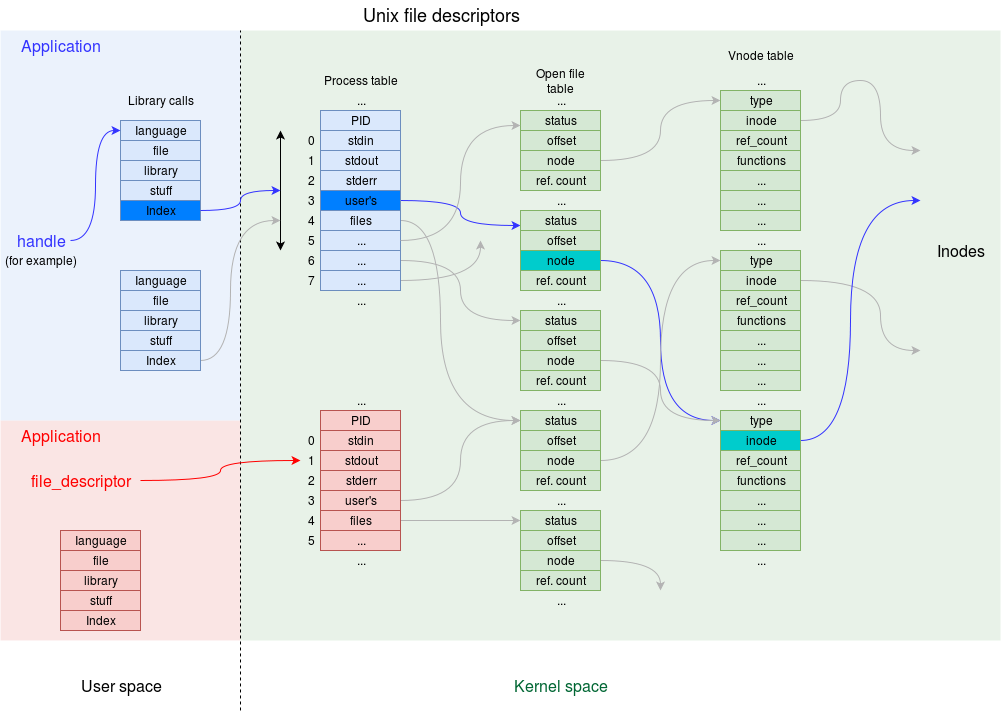File Descriptor
From COMP15212 Wiki
| On path: Filing | 1: Filing System • 2: File Systems • 3: Files • 4: File Attributes • 5: File Types • 6: File Permissions • 7: File Access • 9: Filing System Implementation • 10: I-nodes • 11: Links • 12: File Descriptor |
|---|
| Depends on | File Access • Filing System Implementation |
|---|
The descriptor will be created when a file is opened and is associated with a particular file within a particular process. It is used for immediate file access. It will hold information such as:
- the access permissions.
- e.g. whether you can currently read or write; different from the file access rights.
- the current position (index) in the file.
- the error status.
- control flags.

The details are deliberately kept opaque – loosely the equivalent
of having private variables. A sketch (not 100% guaranteed!) is
shown below. Do not try and memorise (or even understand!) all the
details here – mostly marvel at the complexity!

A couple of points:
- Unix maintains a simple table of files for each process.
- One file may be opened several times, simultaneously; each ‘opening’ has its own descriptor.
- Opened files can be shared: several processes can read the same file at the same time, for example.
- Eventually there is a pointer to the appropriate i-node.
File Descriptor vs. File Attributes
Like the file attributes, a file descriptor holds some metadata about a file. However these are not the same thing.
- The file attributes are ‘permanent’, in that they exist with the file; the file descriptor only exists whilst the file is in use.
- There is exactly one set of file attributes per file; there can be several file descriptors for the same file if it has been opened multiple times concurrently. Each descriptor will have (for example) its own file position.
Articles on Filing System
"Everything is a File" • FAT • File Access • File Attributes • File Descriptor • File Locking • File Permissions • File Systems • File Types • Files • Filing System • Filing System Implementation • Fragmentation • I-nodes • Journalling File System • Links • Network File System (NFS) • Resources